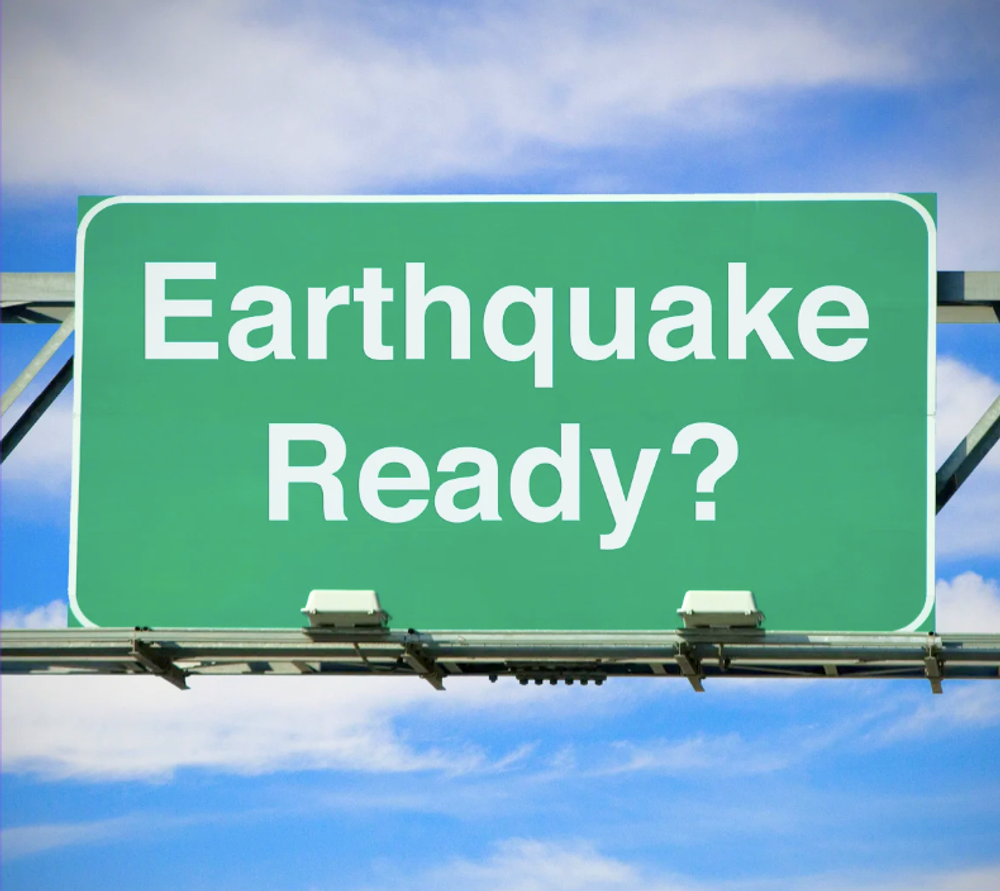Shake It Off: 10 Must-Have Earthquake Preparedness Tips
Posted by Ola Griffin on Sep 29th 2023
Learn these ultimate tips to surviving unexpected quakes with these 10 earthquake prepared strategies, before it is too late!

Understanding Earthquakes
Earthquakes can happen anywhere and at any time, they are not just limited to coastal areas. They can occur in places like New York, the Midwest, California, and Alaska. While the latter two regions are more susceptible to earthquakes, it's essential to always be prepared and possess the knowledge to potentially save lives.The deadliest earthquake in the history of the United States occurred on April 18, 1906, in San Francisco. At 5:12 am that morning, residents were jolted awake. The San Andreas Fault ruptured over a distance of 270 miles, registering an estimated magnitude of 7.9 on the Richter Scale. My own Great-great-grandfather, Ivie, believed that his eldest daughter had perished in that earthquake. However, it took years before he learned that his daughter had survived. This earthquake not only demolished numerous buildings but also ignited massive fires, causing even more destruction and claiming many lives as people struggled to escape the flames, which raged for days. Approximately 80% of the city was reduced to ruins, and over 3,000 people lost their lives.
In the early 19th century, during the era of Daniel Boone and on the fringe of America's wilderness and frontier land, the New Madrid Fault stirred to life. Instead of just one significant earthquake with a magnitude exceeding 7.0, the region experienced three major earthquakes and thousands of subsequent aftershocks. Situated at the heart of America, New Madrid's seismic activity impacted a wide swath of states, including Arkansas, Missouri, Illinois, Kentucky, Tennessee, and parts of Mississippi and Indiana.
The initial tremor occurred on December 16, 1811, during the early hours of the morning. At 2:15 am, the first seismic shock was so powerful that it caused the Mississippi River to flow in reverse, startling those in the vicinity. Ships on the river rocked and swayed as the quake rattled the surrounding area. Not only did the initial shaking transpire, but it was followed by aftershocks of varying intensities, occurring every 6 to 10 minutes.

On January 23, 1812, another substantial tremor struck at 9:15 am, and the most significant earthquake of the series occurred the following month, on February 7, 1812. These earthquakes not only caused intense shaking but also triggered landslides, massive fissures in the earth, falling trees, and instances of ground liquefaction, where the ground took on quicksand-like properties in certain areas. If a similar earthquake were to happen today, the resulting damage would be extensive. Some of the shock waves even rang bells a thousand miles away. Many of the subsequent aftershocks registered in the high 6s and low 7s on the Richter Scale.
The most massive earthquake ever to hit the United States occurred on March 27, 1964, in Alaska. With a magnitude of 9.2 on the Richter Scale, it generated approximately 4 to 5 minutes of intense shaking. The majority of the damage was concentrated in Anchorage, which was situated 75 miles northwest of the epicenter. The epicenter itself was close to Prince William Sound, leading to a tsunami with waves towering as high as 220 feet. Multiple tsunamis were generated, resulting in casualties both in Oregon, where 5 people perished, and in Crescent City, California, where 12 people lost their lives. In total, 122 individuals succumbed to the tsunami, while 9 died directly from the earthquake. The effects of this seismic event were felt as far away as Antarctica and in 20 other countries. The estimated damage from this 9.2 earthquake amounted to 311 million USD in 1964.
Assessing Risk & Making a Emergency Plan
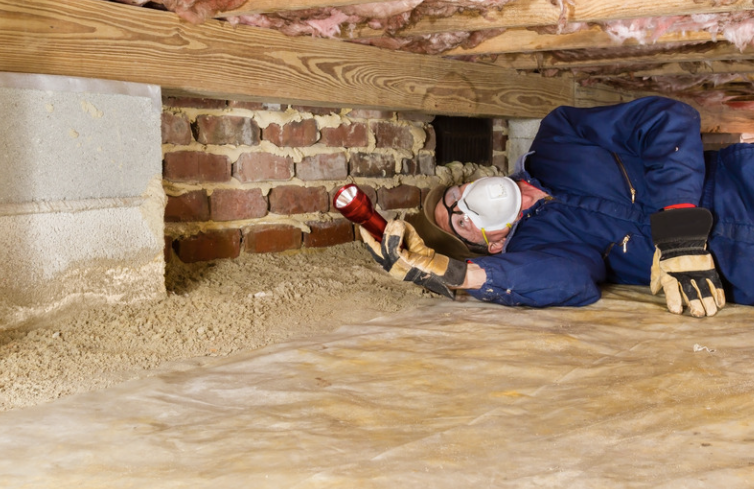
Ensuring the seismic safety of your home is paramount. While brick homes have a certain aesthetic charm, it's crucial to recognize that bricks and rocks can prove vulnerable in larger earthquakes. In the event of an earthquake, refrain from dashing outdoors if you reside in a brick-front building, as more casualties result from falling debris. Exercise caution around glass-fronted structures during seismic activity.
It's equally vital to inspect the type of foundation, especially in older homes, as they can dislodge from raised structures. Concrete foundations are generally considered a safer option, but even foundations can fail. If you observe significant cracks in your foundation or walls, it's prudent to engage a construction engineer to assess your home's safety.
Address the issue of large trees near your home by cutting or trimming them, as substantial shaking can uproot trees or cause branches to topple. Chimneys, often constructed from brick, are susceptible to failure; thus, avoid seeking cover near a fireplace.
While we've previously emphasized the importance of having an emergency plan and a grab-and-go bag, possessing adequate knowledge of what actions to take during an earthquake is even more valuable.
I vividly recall the devastating Northridge earthquake on January 17, 1994, in Southern California where an apartment building collapsed, trapping people in their beds. In such dire situations, it's advised to grab your pillow and shield your head. Owning an earthquake Bed Bag stocked with essentials, including a whistle, can significantly increase your chances of rescue and survival.M any accounts from overseas earthquakes highlight individuals who've survived due to pockets in the debris. That seemingly small space beside your bed could serve as a potential refuge. However, it's crucial to be cautious of large or tall dressers that are not properly secured, as they can topple over during an earthquake. Take a moment to assess your surroundings and make necessary adjustments, such as firmly anchoring dressers to the walls, to enhance your safety preparedness.
Establish Communication Protocols
For individuals who find themselves away from home during an emergency, the uncertainty of their loved ones' safety can be profoundly distressing. It's essential to establish clear communication protocols in advance to expedite contact in such situations and ensure everyone's well-being. Equipping yourself with a grab-and-go bag can aid in your journey back home.
Given the possibility of cell tower failures or congestion during local emergencies, designating an out-of-state point of contact for everyone to check in with is a wise strategy. Ensure that everyone is aware that Aunt Sue in Timbuktu is the designated contact person. Save this out-of-state contact number in all cell phones and keep it written down in a secure location for easy access if needed. It's advisable to practice this communication plan; set a specific day and time, like Monday, October 16th, at 10 am, when everyone will check in. Texting may prove to be a more reliable communication option in such scenarios.
Have Essential Supplies
Gather your medicines, food, and water. Stores could be damaged and closed, or they may get looted. I do not recommend trying to go shopping for supplies after an earthquake hits.
- Get-Home Bag - One for each car Or have a small bag at work if you commute other ways. Building a "Get Home" Bag - CAR EMERGENCY PREPAREDNESS / GRAB-N-GO BAGS Checklist
- Grab-n-Go - Building a "Get Home" Bag - CAR EMERGENCY PREPAREDNESS / GRAB-N-GO BAGS Checklist
- Bed-Kit - A bag of supplies, next to your bed in case an earthquake happens when you are in bed sleeping. Sturdy shoes to slip on to protect from glass and debris. Flashlight, glasses, dusk mask and a whistle. I would also keep several bottles of water by the bed.
- Stay-at-Home Kit - at least a 2 week supply of food and water. If you need some ideas for freeze-dried dinner meals or MRE here is a link: Meals in a Mylar: "The Main Course" - Freeze Dried Version or breakfast MRE ideas Meals in Mylar: "Break The Fast"
- However, if MRE meals are not available, include easily prepared and heat-free items. Consider quick oats that can be soaked with water, as heating might be challenging, especially if there are nearby gas leaks—avoid open flames. Organize your supplies into two bins, each containing a week's worth of easy-to-prepare meals for your family. Don't forget to have a readily accessible water supply, as a general guideline suggests storing approximately 1 gallon of water per person per day. Keep in mind that your pets will also require an ample water supply.
- It is advisable to maintain a one-month supply of prescription medications, securely stored in child-proof containers. Additionally, keep a list of your medications and their dosages on a card along with any over-the-counter medicines you may need.
- Utility Shut-Off Tools
For less than $15.00 you can purchase a gas and water shut-off tool like this one. I got this Gas and Water Shutoff 4-in-1 Tool for $11.67 plus tax at Home Depot. This can be found in the found where the plumbing isle. Well worth the cost. Having the right tool for the job makes turning off the gas a straightforward task, eliminating any need for second-guessing.
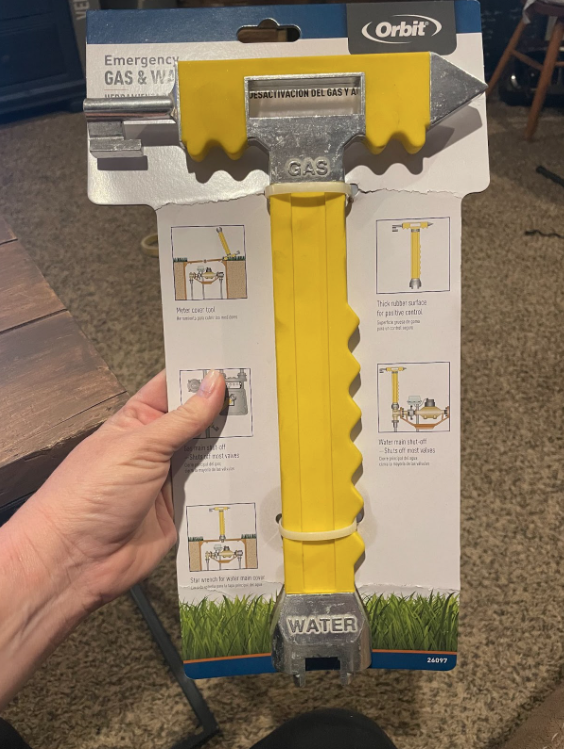
Special Circumstances
PETS - At PackFreshUSA we love our furry friends.and have created multiple resource guides on how to prepare for emergencies with pets; Pet Emergency Disaster Preparedness - PackFreshUSA. Click here for a printable Pet Emergency Disaster Kit & Checklist.
ELDERLY & SPECIAL NEED FAMILY MEMBERS - For our older less mobile family members we need to make plans to accommodate their needs. With less mobility when the earthshakes they will need help to navigate the debris. Having a manual wheelchair in case of an electric wheelchair or scooter for back-up. Make sure any prescriptions or other needs are met.
YOUNGER CHILDREN - When you have younger children, it's crucial to establish a clear plan for everyone's role in case of an emergency. With older kids, they can take on responsibilities such as looking after younger siblings. Develop a well-defined plan, for instance, Mom will take care of Jake, and Dad will be responsible for Jill.
Where Is the Safest Place to Go During an Earthquake?
Inside
DROP, COVER, and HOLD ON! Prioritize covering your head as falling objects can pose significant dangers. The key is to swiftly DROP to the ground, then seek COVER, such as getting beneath a sturdy table or desk, while avoiding proximity to tall cabinets, windows, or lamps. If these options aren't available, opt for an interior wall.
Experts advise sheltering in place during the initial tremors. To protect your head, crawl under robust furniture like a table or desk or position yourself against an interior wall. It's crucial to stay away from exterior walls featuring windows or large mirrors, as glass can shatter. Be cautious of heavy furniture like bookcases and tall dressers, which may topple over. Avoid placing heavy items like pictures or shelves with objects above your bed, and consider secure hooks designed to prevent items from falling if you have hanging pictures. Always take measures to securely support items, such as using earthquake-specific putty beneath objects on shelves to prevent them from toppling.
Assist others around you in case of injuries. Following an earthquake, never utilize elevators; always use the stairs. Aftershocks may occur immediately after the initial shaking, and it's important to remain vigilant, as sometimes larger earthquakes follow, with the initial shaking acting as a foreshock.
If you find yourself in a location equipped with an elevator, such as a school or workplace, and the shaking has ceased, it is advisable to refrain from using the elevator when you depart. Instead, opt for the stairs.
Outside
If you are outside during an earthquake, get away from buildings, lights, trees and power lines. Drop and cover your head. Avoid running but stay alert. People often get dizzy because of the shaking so running may cause you to lose your balance and cause injury.
If you happen to be driving during an earthquake, it is essential to pull over to a spacious, open area that is free from trees or power lines. It is crucial to remain inside your vehicle and avoid attempting to drive during the earthquake, as roads and bridges may become compromised and unsafe.
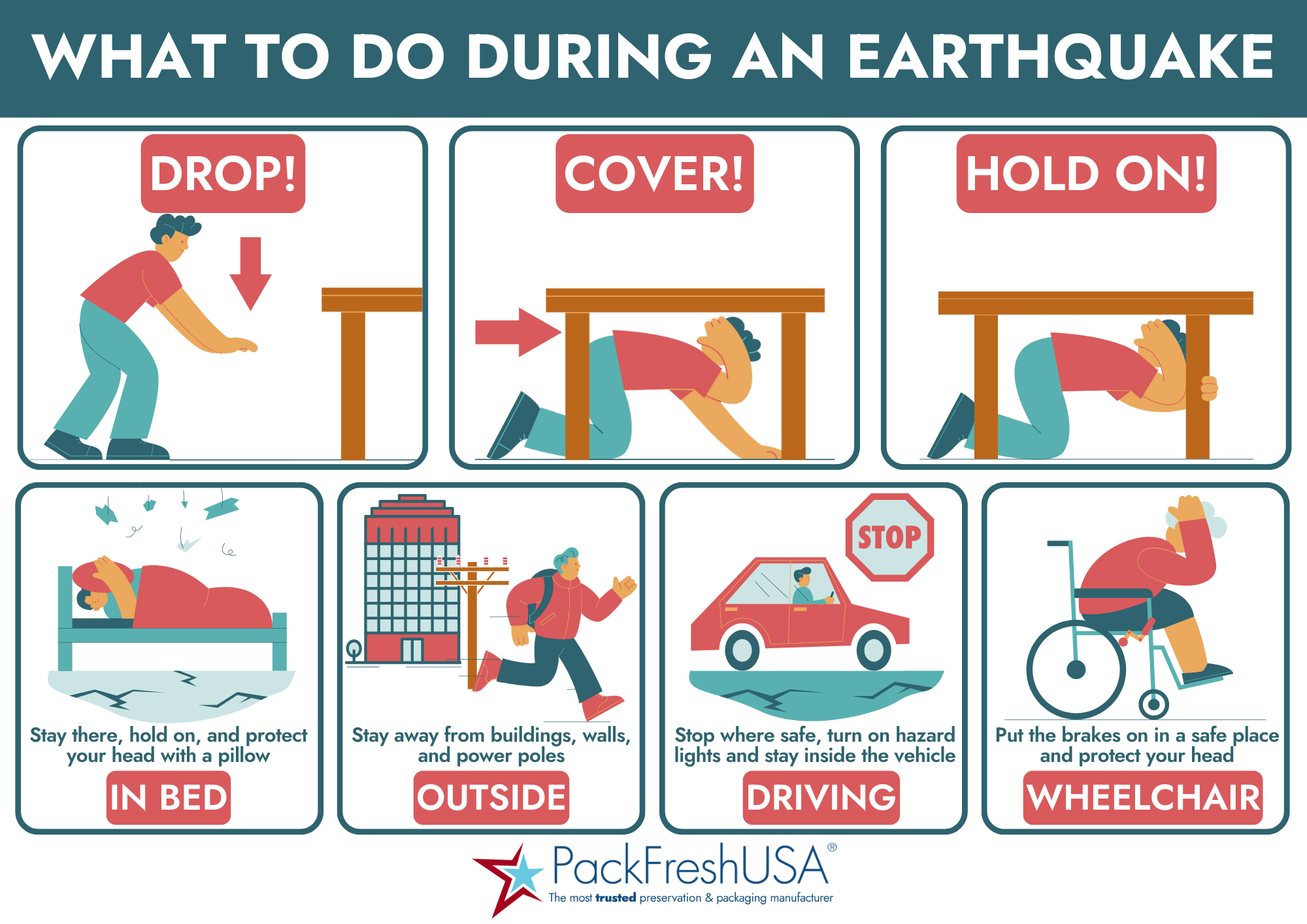
Click HERE for a printable PDF of this earthquake infographic
Know What to Do After an Earthquake
In the aftermath of a significant earthquake, do you have a plan in place? Having this knowledge is helpful to ensure you can ACT quickly instead of re-act. Aftershocks can compound the damage, making these guidelines invaluable for safeguarding yourself and your family.
Once the tremors have ceased:
- Check for injuries and assist others with their injuries.
- Call 9-1-1 immediately for individuals with severe injuries.
- Examine water, gas, and electrical lines for damage.
- If you detect the smell of gas, open all windows and doors, then vacate the premises immediately and contact the authorities.
- Tune in to the radio for crucial information and instructions.
- Exercise caution around shattered glass and debris.
- Inspect for structural damage, including cracks in the roof, walls, and foundation of your home.
- If you're near the coast, move to higher ground and avoid beaches due to potential tsunamis.
- Do not enter damaged areas or buildings; stay alert.
- Refrain from smoking indoors.
- Anticipate aftershocks and employ the Drop, Cover, & Hold technique during any subsequent shaking.
- Avoid driving if possible to keep roads clear for emergency vehicles and consider infrastructure damage.
- Exercise caution when opening closet doors and cupboards to prevent items from falling.
- Be mindful that chimneys often crack or weaken, and they may fail, so steer clear of your fireplace and chimneys.
- Approach entering any building with caution.
- For insurance claims, take photographs of damage to your home and its contents.
- Collect essential items such as your grab-and-go bags and other necessities in case additional aftershocks necessitate sleeping outdoors.
Securing Your Home
We've already discussed the importance of checking and, if necessary, turning off gas, power, and water. It's crucial to ensure that everyone in the household knows how to shut off the gas at the main line and the water supply. If you have children over the age of 13, consider their age and maturity in teaching them these essential tasks. Additionally, make sure you have the required tools on hand to safely turn off the gas; this could be a life-saving skill.
Equipping yourself with good-quality leather gloves is advisable for effective cleanup, and sturdy shoes are a must to protect your feet from glass and debris.
Furthermore, having supplies like duct tape, plastic sheets, plywood, screws, and drills can prove invaluable for securing broken windows and addressing other damage promptly.
Family Meeting: Prepare Together
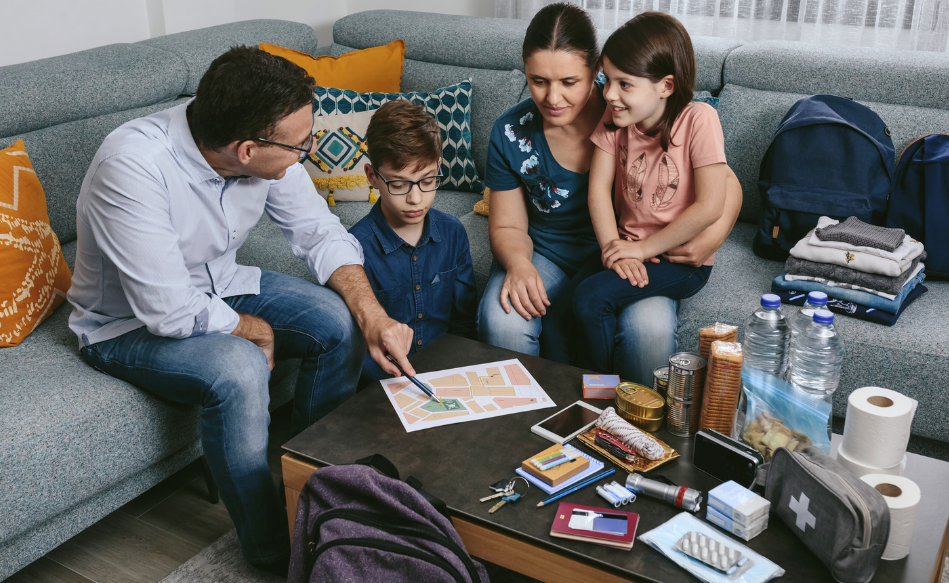
Tailor the conversation for younger kids by exploring age-appropriate resources like YouTube videos or books on earthquake preparedness. The Red Cross offers valuable materials as well. Pre-teens and teenagers can actively participate in crafting the family preparedness plan. Involving them can be empowering, as their input is valuable.
Take the time to ensure them that it is through preparedness we get knowledge to ACT instead of re-ACT to the situation.
- Initiate discussions about what to do during an earthquake, particularly if it occurs while we're in bed. For younger kids, there's an informative Red Cross video available on YouTube. Here is a Red Cross Video for young kids that can help them understand better.
- Explore the scenario of an earthquake striking while they are at school. Identify who would pick them up and make sure they are aware of this plan.
- For teenagers who drive, discuss earthquake safety while on the road. Teach them to stop, pull over, activate hazard lights, and proceed only when it's safe. Emphasize the potential for road damage and fallen power lines.
- Cover the importance of emergency communications, including designating an out-of-state contact (program name and number into phones) and selecting a safe meeting place.
- Inspect each room in your home and identify safety zones. Highlight the importance of staying away from windows, fireplaces, and tall furniture during earthquakes.
- Practice the DROP, COVER, & HOLD ON drill as a family to reinforce the procedure.
- Compile a list of household improvements for earthquake-proofing, such as securing tall cabinets.
- Familiarize mid-teens and teenagers with the location of the gas shut-off valve, water main, and electrical shut-off.
- Educate the family about the distinctive smell of natural gas and the appropriate response if it's detected, including opening windows, doors, and evacuating.
- Lastly, create a bed kit that includes a flashlight and sturdy shoes for everyone in the family.
In conclusion, understanding the potential threat of earthquakes is crucial, as they can occur in various regions, not just coastal areas. Historical events like the 1906 San Francisco earthquake, the 1811-1812 New Madrid earthquakes, and the 1964 Alaska earthquake remind us of their devastating impact. To mitigate risks, it's essential to assess and secure your home, have emergency plans and kits ready, and establish communication protocols with loved ones. Knowing how to react during an earthquake, whether you're inside or outside, can save lives. After an earthquake, promptly check for injuries, inspect utilities, and stay informed through radio broadcasts. Additionally, prepare your family, involve children and teenagers in discussions and drills, and equip your home with necessary tools for safety and recovery. By being well-prepared and informed, you can significantly enhance your ability to respond effectively in the event of an earthquake and protect the well-being of yourself and your loved ones.
Practice makes perfect - it is not just a saying, it is the best way to help ensure your families safety.
Happy prepping and much love,
Ola Dee Griffin
Long-Term Food Storage Expert
Customer Service Dept.
Safeguard Brands, Inc., DBA PackFreshUSA.com
YouTube Creator (14) Pandemic Prepsters - YouTube
Toll Free 5 Star Service Line: (844)8-5STARS (844) 857-827
Cell: (951) 902-4644

